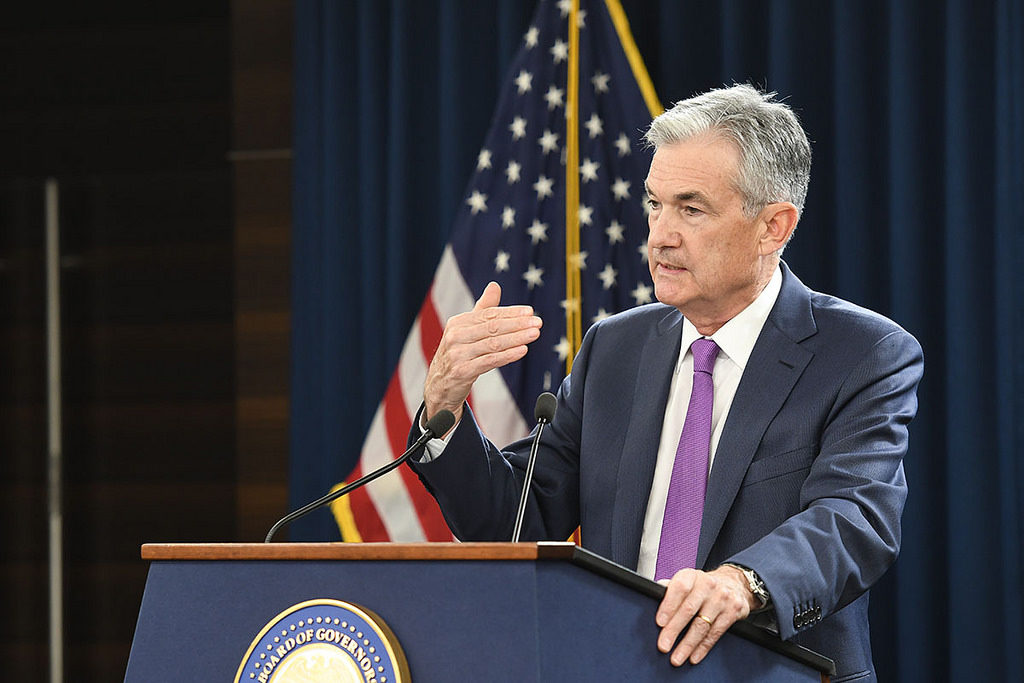Did the Fed Just Announce the Next Recession?
Release of the FOMC Minutes
On Wednesday, the Federal Reserve System’s Open Market Committee (FOMC) released the minutes from its September meeting. No real news here, since the Fed Chairman, Jerome Powell, gave a press conference after that meeting. But there’s some stuff buried inside the minutes that’s worth closer inspection, especially since the FOMC is the monetary policymaking body of the Federal Reserve System, which is itself tasked with regulating monetary policy for the United States of America. A link to the FOMC minutes pdf is provided below if you’d like to read it for yourself.
First, the Good News
Jobs
The FOMC minutes sound upbeat about the U.S. economy and its outlook for the next couple of years. The labor market looks strong as the national unemployment rate decreased to 3.9 percent in July and stayed there in August. The rate of private-sector job openings continued to move up in June and July and initial claims for unemployment insurance benefits were at a historic low in mid-September. Furthermore, average hourly earnings for all employees rose 2.9 percent over the 12 months ending in August.
Business
Real gross domestic product (GDP) “appeared to be rising at a strong rate in the third quarter”, industrial production expanded at a “solid pace” in July and August, and real personal consumption expenditures (PCE) “appeared to be rising strongly in the third quarter”. Retail sales increased somewhat in August, and the Fed revised its data for July upward “to show a sizable gain.”
Inflation
The Federal Reserve is always focused on inflation and tries to keep inflation at around 2 percent. According to the FOMC minutes, “consumer price inflation, as measured by the 12-month percentage change in the price index for personal consumption expenditures (PCE), remained near 2 percent in July. ” The consumer price index (CPI) rose 2.7 percent over the 12 month period ending in August.
The Not So Good News
Jobs
While the Fed noted the improving unemployment rate, currently at a low 3.9 percent, it also noted “the labor force participation rate and the employment-to-population ratio moved down somewhat, on balance, over those two months [July and August].” The unemployment rate is a metric provided by the Bureau of Labor statistics and one you will often hear cited on the mainstream news, as well as by politicians. But this metric currently doesn’t take into account things like people who are underemployed or have stopped looking for work.
According to The Balance (see links below), when you consider these two factors the real unemployment rate is currently 7.5 percent. This might explain why these other labor metrics, the labor force participation rate and the employment-to-population ratio, moved in the opposite direction. It also is indicative of a trend that should temper enthusiasm over the improving job numbers. The more people we have giving up on finding work, or taking one or more jobs that can’t sustain a basic living standard without subsidies from family or government, the less stable our economy will be.
Business
Two of the most significant indicators of standard of living are housing and automobiles. While the FOMC minutes indicate that GDP is improving and the overall domestic US business outlook is positive, these two sectors were pointing in the opposite direction. There was a downtrend in light automobile sales in July and August, but the Fed expects that to reverse. However when talking about housing, the Fed said “[s]ales of both new and existing homes declined somewhat in July, and existing home sales were flat in August”. It also said that new housing starts look to be moving lower in the coming months.
Emerging Markets and Consumer Savings = The Next Recession?
Emerging Market Economies
The troubles of emerging market economies (EMEs), like Turkey and Argentina, have been all over the news lately. These countries carry a lot of sovereign debt in US dollars. According to the FOMC minutes, “some participants noted that financial stresses in a few EMEs could pose additional risks if they were to spread more broadly through the global economy and financial markets.” As the US dollar gains strength, it takes more of their domestic currencies to pay back that debt. For example, the Turkish Lira has lost about a third of it’s value against the US dollar. That’s like having the interest rate their sovereign debt shooting up by 33 percent!
Consumer Savings
Furthermore, while the Fed noted that consumer spending was up, it also noted that the household savings rate was up “significantly” and some members of the FOMC suggested that the “higher saving rate may indicate some greater caution on the part of consumers, greater inequality of income and wealth—which would imply a lower aggregate propensity to spend—or changing consumer behavior in a low interest rate environment.” For a long time, Americans have had easy access to credit that we’ve used to buy more and more stuff. It’s probably safe to say that this has come at the expense of savings.
Here it sounds like the Fed might be concerned that a shift away from this pattern of being spendthrift could have a negative effect on the economy. Is it possible that with access to non-mainstream controlled information sources now at the tips of their fingers, like the one you’re reading now, people are learning how to be smarter with their money? If so, it might indeed, have a negative impact on the economy in the short-term.. But it seems to me like that would be a good thing in the long-term.
The Prediction
Over the 2018–20 period, output was projected to rise at a rate above or at the staff’s estimate of potential growth and then slow to a pace below it in 2021. The unemployment rate was projected to decline further below the staff’s estimate of its longer-run natural rate but to bottom out in 2020 and begin to edge up in 2021.
A look back over the last half-century makes it pretty clear that the US economy is cyclical. Even those who aren’t old enough to remember, know that the last economic downturn hit a decade ago. Now, the US is currently in what is repeatedly called the longest running economic expansion in US history. So it sounds like we might be due for another downturn. Against that backdrop and the other items discussed above, there is one thing in the FOMC minutes that’s worth noting.
The Fed didn’t dwell on this but on page 5 of the FOMC minutes it says, “[o]ver the 2018–20 period, output was projected to rise at a rate above or at the [FOMC] staff’s estimate of potential growth and then slow to a pace below it in 2021. The unemployment rate was projected to decline further below the [FOMC] staff’s estimate of its longer-run natural rate but to bottom out in 2020 and begin to edge up in 2021 (emphasis added).” In other words, the FOMC thinks the economy will keep improving into 2020, but then take a downturn in 2021.
That sounds like a subtle way of saying “get ready for a recession by 2021”.
About the FOMC (from the Federal Reserve Bank of Richmond)
The Federal Open Market Committee (FOMC) is the monetary policymaking body of the Federal Reserve System. The FOMC is composed of 12 members–the seven members of the Board of Governors and five of the 12 Reserve Bank presidents. It schedules eight meetings per year, one about every six weeks or so, to review economic and financial developments, after which it issues a policy statement that summarizes the Committee’s economic outlook and the policy decision at that meeting.
Four times per year the Chairman holds a press briefing after the FOMC meeting to present the FOMC’s current economic projections and to provide additional context for the FOMC’s policy decisions. A full set of minutes for each FOMC meeting is published three weeks after the conclusion of each regular meeting, and complete transcripts of FOMC meetings are published five years after the meeting.
The Political New Report was created in the interests of informing the public and we need your help. Please share this article and website on social media, and also like and subscribe so other like-minded people can find this content.
Resource Links:
- Minutes of the Federal Open Market Committee September 25–26, 2018, The Board of Governors of the Federal Reserve, October 17, 2018
- What is the Federal Open Market Committee (FOMC)and when does it meet? [FAQ], The Federal Reserve Bank of Richmond
- BREAKING: Fed Announces WHEN the market WILL SLOW!!!, October 17, 2018, Meet Kevin YouTube Channel
- Employment-To-Population Ratio [accessed October 18, 2018], Investopedia
- Real Unemployment Rate With Calculations, The Balance, October 5, 2018
- FOMC Chairman Powell image credit: U.S. Government Works (Public Domain)


